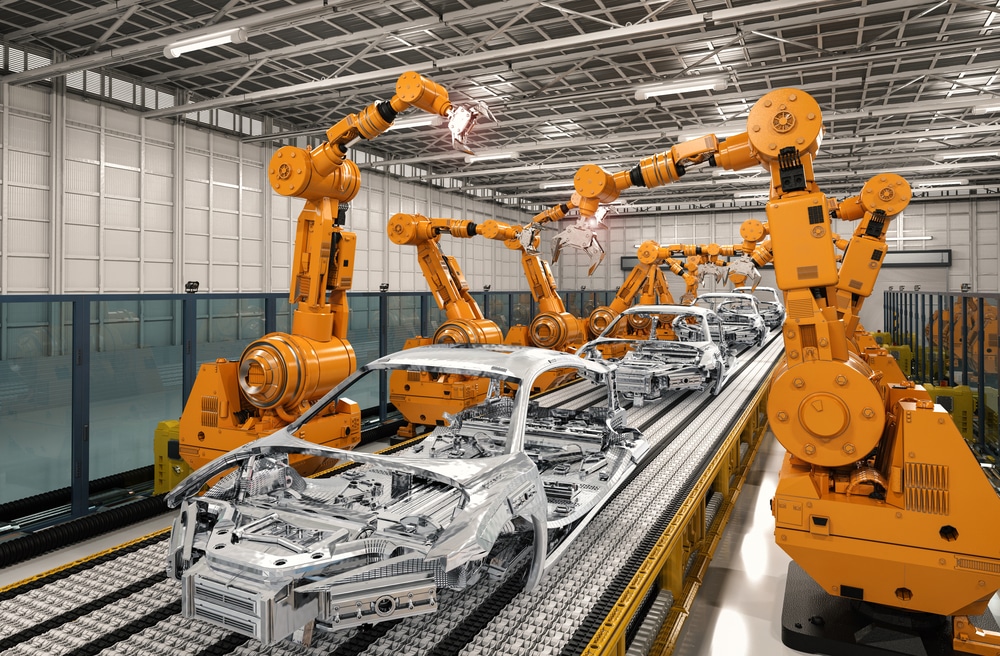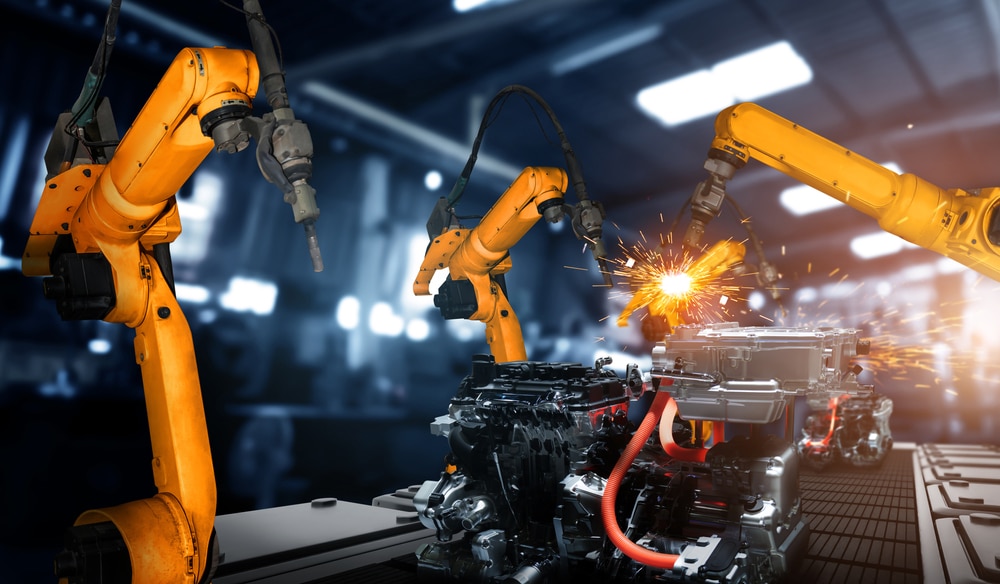There are three important factors to consider when automating an assembly line: environmental factors, the development of a process, and the sequencing of operations. All three of these factors are crucial in making the design and build of an effective automated assembly line.
But First, What is an Automatic Assembly Line?
An automatic assembly line is a manufacturing process in which parts are assembled into a finished product, usually on a conveyor belt. The parts are passed down the line and are automatically put together according to a set of instructions.
You will typically find an automatic assembly line in a factory, where products are mass-produced. The assembly line can be used to put together products of all shapes and sizes, from cars and computers to toys and textiles.
Industries that can benefit from an automatic assembly line include:
- Automotive
- Electronics
- Aerospace
- Heavy Manufacturing
What are the Benefits of an Automatic Assembly Line?
There are several benefits of using an automatic assembly line in a factory:
Reduced Labor Costs: An automatic assembly line can dramatically reduce the number of workers needed to put together a product. This can lead to significant cost savings for the company.
Increased Efficiency: An automatic assembly line can be much more efficient than a human-operated assembly line. This is because an automatic assembly line can operate at a much higher speed than a human-operated assembly line.
Reduced Errors: An automatic assembly line is much less likely to make mistakes than a human-operated assembly line. This is because an automatic assembly line is controlled by computers, which are much more accurate than humans when there are quality assurance and control metrics to be considered.
Reduced Waste: An automatic assembly line can reduce the amount of waste produced by a factory. This is because an automatic assembly line can be more precise than a human-operated assembly line when it comes to specific tasks where there is calculated use of raw materials that produce wastage.
Increased Output: An automatic assembly line can dramatically increase the output of a factory. This is because an automatic assembly line can operate at a much higher speed than a human-operated assembly line and is not affected by sickness or fatigue.

The Three Factors to Consider When Automating an Assembly Line
Given these benefits, it’s not a real surprise that companies are increasingly moving towards full-scale automation in their assembly lines. In fact, it is projected that the assembly line automation market will reach 223.5 billion USD from 2021 to 2026. That being said, what goes into the design of an effective automatic assembly line?
When automating an assembly line, there are three important factors to consider: environmental factors, the development of a process, and the sequencing of operations.
Environmental Factors
The first factor to consider is the environment in which the assembly line will be located. Some environmental factors to consider include:
Temperature: The assembly line should be designed to operate in the appropriate temperature range. If the assembly line is located in a hot environment, it will need to be designed to withstand high temperatures. If the assembly line is located in a cold environment, it will otherwise need to be designed to withstand low temperatures.
Humidity: The assembly line should be designed to operate in the appropriate humidity range, whether it is high humidity or low humidity.
Dust: The assembly line should be designed to operate in the appropriate dust level. If the assembly line is located in a dusty environment, it will need to be designed to withstand high dust levels.
Other External Influences: Among other factors, the location of the assembly line must be considered as it undergoes automation. Floor space is another thing to factor, as limited space, for instance, can hamper the placement of parts, the system’s overall design, and can possibly cause safety risks.
Outside influences such as the budget and turnaround time of the project are other things to consider, and while these factors are not due to the environment, the circumstances surrounding a project’s budget and timeline affect the entire design.
The Development of a Process
The second factor to consider is the development of a process that can be automated. The processes involved in the assembly line need to be developed in a way that it can be easily automated and controlled by computers.
For instance, if a process cannot be automated (or is too costly to automate), such as the handling of fragile materials, then it must be done manually. The same thing applies to other processes in the assembly line that address worker safety, such as the use of dangerous equipment or handling hazardous chemicals; this is where automation becomes significant, as a task that can be taken off human hands is then done by a robot to reduce health and safety risks.
Understanding which parts of the assembly process can be or cannot be automated is crucial to the design of an automatic assembly line, as this saves time, resources, and effort. In designing automated assembly systems, it is important to remember to “KISS” or “Keep It Simple, Stupid,” and this core principle helps ensure that the end-user benefits from the design.
The Sequencing of Operations
The third factor to consider is the sequencing of operations. The operations or tasks need to be sequenced in a way that they can be easily executed on an automatic assembly line. This factor in the process of building an effective assembly line influences efficiency in both design and performance.
Especially in assembly line operations where there are multiple parts and subassemblies, the sequence or order of processes plays a crucial role in the final output of the product. By establishing the correct sequence in operations, the design of an assembly line can deliver the best quality that automation can offer.
How These Three Factors Work Together
When put together, these three factors form the basis for an effective automatic assembly line. By considering environmental factors, developing a process that can be automated, and ensuring the most efficient sequence in operations, you can create an assembly line that performs up to standard. This means that it is safe, cost-effective to use, and that quality is not compromised.
With Techman Robot, you can rely on efficient cobot automation in a wide range of industries. Contact us today for any questions or inquiries.

